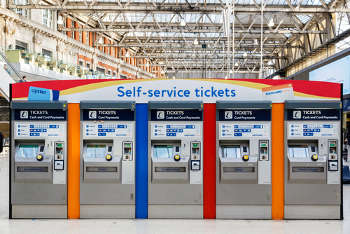The proportion of funding for the nation's railways coming directly from passengers increased again in 2016-17, while government funding fell once more, perpetuating a trend covering at least the last five years.
Since 2011-12, income from fares increased by 18.2%, although passenger journeys increased by 18.4%, while Government funding, excluding borrowing, decreased by 21.1%.
The new figures come from the national rail monitoring body, the Office of Rail and Road (ORR), which adjusts for inflation to bring each year into the current year's price base.

More passengers are putting more money in
In 2016-17, passengers paid in £10.5bn to the system, including £9.7bn from fares and the rest other operations such as on-train catering and car parking charges.
ORR analysis found that on average, government contributed £1.53 per passenger journey in England, £6.08 in Scotland and £8.82 in Wales.
'The total cost of running the railways was £19.5bn, a 2.7% increase from 2015-16. Around 59% of these costs were incurred by train operators, 35% managing the network, and 6% by freight, High Speed 1 and other components of the industry,' the ORR report states.
Around £12.6bn was spent by train companies minus £1.7bn for 'less industry money flows' - money flows within the industry such as access charges - making £11.3bn. This including staff costs (£2.9bn), payment to the Department for Transport (£3.2bn) and rolling stock costs (£1.8bn).
Network Rail spent £7.6bn, minus £0.7bn for 'less industry money flows' - money flows within the sector such as payments to operating companies for the impact of planned and unplanned delays - making £6.9bn over the year. This included costs for maintenance (£1.3bn), operating (£1.3bn)and financing costs (£1.8bn). Across the country, expenditure per passenger kilometre was highest in Wales and Sussex at 43p and 40p respectively and lowest in London North West (28p) and Anglia (27p).
The ORR annual rail funding report revealed that the £9.7bn of rail funding from passenger fares represents an increase of 1.1% from 2015-16, while the £3.4bn from government funding (net), was a decrease of 0.7% since 2015-16.
The UK Government received a £700m net contribution from train companies, after the £2.5bn companies received from government was balanced against a total of £3.2bn paid back to government under franchise agreements.
Northern Rail received the most government funding (£284m, while South West Trains, whose franchise ended in the summer, paid in the most (£366m).
Network Rail received £4.4bn in government grants, £1.5bn in access charges paid by train companies and £0.9bn from other income such as property.
It also borrowed £6.1bn from government, largely used to pay for £3.4bn of enhancements projects, £2.4bn for the repayment of some of Network Rail’s private sector debt and other expenditure.
Franchised train companies’ expenditure increased by 1.7% to £12.6bn.
Over five years:
- Income from fares has increased by 18.2%.
- Government funding (excluding borrowing) has decreased by 21.1%.
- Train companies expenditure has increased by 20.2%.
- Network Rail’s expenditure has increased by 20.0%.
- In 2016-17, government received £0.7bn (net) from train companies. In contrast, governments paid £0.1bn (net) to train companies in 2011-12.
- Passenger journeys have increased by 18.4%.
Register now for full access
Register just once to get unrestricted, real-time coverage of the issues and challenges facing UK transport and highways engineers.
Full website content includes the latest news, exclusive commentary from leading industry figures and detailed topical analysis of the highways, transportation, environment and place-shaping sectors.
Use the link below to register your details for full, free access.
Already a registered? Login